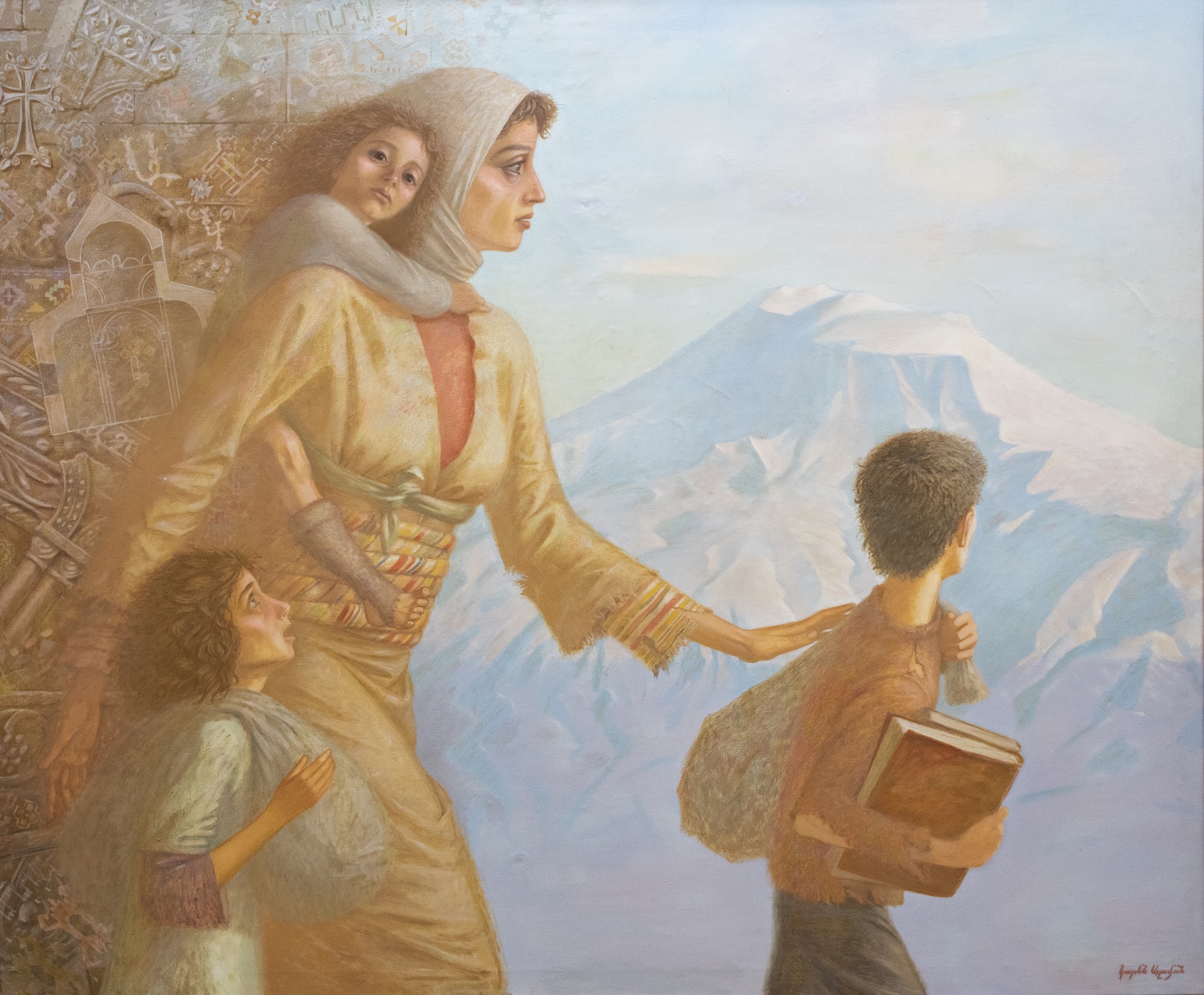
A woman flees with her children, carrying meager bundles and, for one of them, two books, symbols of the Armenians’ deep attachment to their language and written culture. In the background stands Mount Ararat. A scene of distress, with a mythical mountain for the Armenian people: this image inevitably evokes the 1915 genocide.
This cataclysm was preceded by several episodes of massacres. At the end of the 19th century, the Ottoman Empire was falling apart. In this context, the demands of the Armenians—second-class citizens who had begun to seek equal rights—were seen as an additional destabilizing factor. Barbaric murders, rapes, looting, and the abduction of women were carried out between 1894 and 1896 in various provinces of the empire, with an estimated death toll of 200,000. In November 1896, Jaurès, speaking at the French Chamber of Deputies, denounced “the war of extermination that has begun” and harshly criticized France and Europe’s indifference to these “atrocious brutalities” committed against the Armenian people.
A few years later, in 1908, the Young Turk movement staged a revolution against the sultan and came to power with the support of Armenian reformist parties. However, this apparent openness to minorities was merely a façade; in reality, their goal was to create a homogeneous nation-state based on ethnic and religious uniformity. It was in this context that, in 1909, massacres against Armenians broke out in Cilicia, a southern province, resulting in between 20,000 and 30,000 deaths.
This was only a prelude to the 1915 genocide, which took place in the context of World War I, facilitating its execution. The major world powers were preoccupied elsewhere. Moreover, Armenians—who had been the target of incitement to hatred for decades—were now accused of colluding with the Russian enemy. They were murdered in stages: first, conscripts in their prime, then intellectual elites and community leaders, followed by teenage boys and middle-aged men. Next came the deportation of more than a million women, children, and elderly people. Officially, these population displacements were justified as a security measure for the Ottoman Empire. In reality, they were death marches, during which most of those who did not die of hunger or exhaustion were systematically eliminated. In total, two-thirds of the two million Armenians living in the empire perished. In the following years, isolated assassinations and larger-scale massacres would complete this grim project.
In those days, the concept of genocide had yet to be defined, and though the term “crime against humanity” was coined on that occasion, the perpetrators did not incur any punishment. The legal definition of “genocide” as it was established in 1948 by the UN applies in this case. Anyway, at state level, Turkey and Azerbaijan still deny it. These two allies claim a common destiny, according to their slogan :”Two states, one nation”. You only have to observe a map to understand that the existence of Armenia constitutes an obstacle to reunification. Armenia is trapped between these hostile states, and after their bitter historical experience, Armenians know what could await them, knowing the fate of Armenians from Nagorno Karabagh. It is their very survival that is now at stake.